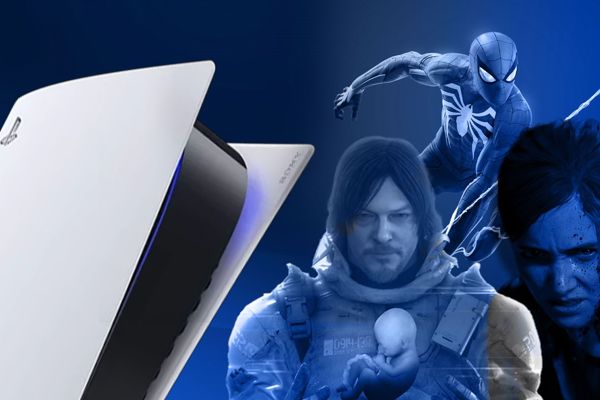
Unveiling Sony's New PlayStation Handheld: Release Date, Price, and Everything You Need to Know about the PlayStation Portable

Introducing Sony's latest handheld gaming console, the PlayStation Portable! Discover its release date, price, pre-order details, impressive specs, and delve into the innovative features that make the PlayStation Portable a must-have gaming device
Release date and price
Sony is finally unveiling a new handheld gaming console, called the PlayStation Portal. While it's not exactly a traditional console, the Portal is a streaming device that allows PS5 games to be played directly on its screen, by transmitting them from the console itself. With this move, Sony is stepping into the realm of cloud gaming dominated by Microsoft for years. However, Sony will face the challenge of effectively marketing this hardware and convincing consumers why it's superior to using Remote Play on a tablet or smartphone with a Bluetooth-connected controller.
Sony has officially announced that the PlayStation Portal will be released on November 15 and will be priced at $199. Interested buyers can now place their pre-orders through PlayStation Direct. To provide some context, the Nintendo Switch OLED model is priced at $350, the Steam Deck starts at $500, and Logitech's G Cloud gaming handheld console typically sells for $350.
Where to preorder the PlayStation Portal
There are multiple retailers now accepting preorders for the Portal, but it's essential to act quickly as they tend to sell out rapidly. You can secure a preorder at Walmart, Best Buy, and GameStop for $200 before its release on November 15.
PlayStation Portal specs
Since the PlayStation Portal utilizes remote play to stream from a PS5, it doesn't require top-of-the-line internal components that would keep gaming laptops like the Asus ROG Ally up at night. What we do know is that it features an 8-inch HD LCD screen, which is an entire inch larger compared to the Steam Deck. With a 1080p display and a 60Hz refresh rate, it should deliver a crisp image on a screen of that size.
Sony has made an peculiar choice to exclude Bluetooth functionality on the PlayStation Portal. However, it does come equipped with built-in speakers and a 3.5mm headphone jack. Since it is solely a streaming device, there is no Micro SD port available.
In terms of battery life, you can expect approximately three to four hours of gameplay on a full charge, which is not particularly surprising. The most noticeable aspect of the PlayStation Portal's design is its controller. Resembling a cut-in-half DualSense, it is attached to each side of the display. The only feature absent here is the DualSense touchpad, and it remains unclear how Project Q's design will incorporate those functions.
The interface of this device differs from the Steam Deck, Switch, and ROG Alloy as it showcases a DualSense-inspired design with vertical light piping on each grip. Furthermore, it possesses all the buttons and features found in a DualSense wireless controller. According to a recent video leak, the PlayStation Portal is expected to operate on an Android OS, as demonstrated by the footage, exhibiting uncomplicated menus and QR codes.
How PlayStation Portal works
If you wish to utilize a PlayStation Portal, it is imperative to possess a PS5 and have the desired games installed on your console. Once these prerequisites are fulfilled, you can seamlessly stream games from your PS5 to the handheld console via Remote Play using Wi-Fi. However, please note that it is not possible to stream virtual reality games through the PlayStation Portal, which may disappoint owners of PlayStation VR 2.
Editor's P/S
As a passionate gamer, I am thrilled about the release of the PlayStation Portal. The fact that it allows PS5 games to be played directly on its screen, by transmitting them from the console itself, is a game-changer. This means that I can now enjoy my favorite PS5 games on the go, without being tethered to my TV. The PlayStation Portal's 8-inch HD LCD screen is also a great size for portable gaming, and the 1080p display and 60Hz refresh rate should provide a crisp and smooth gaming experience.
However, there are a few aspects of the PlayStation Portal that I find disappointing. The lack of Bluetooth functionality is a major oversight, as it would have allowed for more flexibility in terms of connecting peripherals. Additionally, the battery life of three to four hours is relatively short, and may not be sufficient for longer gaming sessions. Finally, the price of $199 is a bit steep, especially when compared to the Nintendo Switch OLED model, which is priced at $350 and offers a more comprehensive gaming experience.
Overall, I am excited about the potential of the PlayStation Portal, but I do have some reservations about its price and features. I hope that Sony will address these issues in future iterations of the device.














